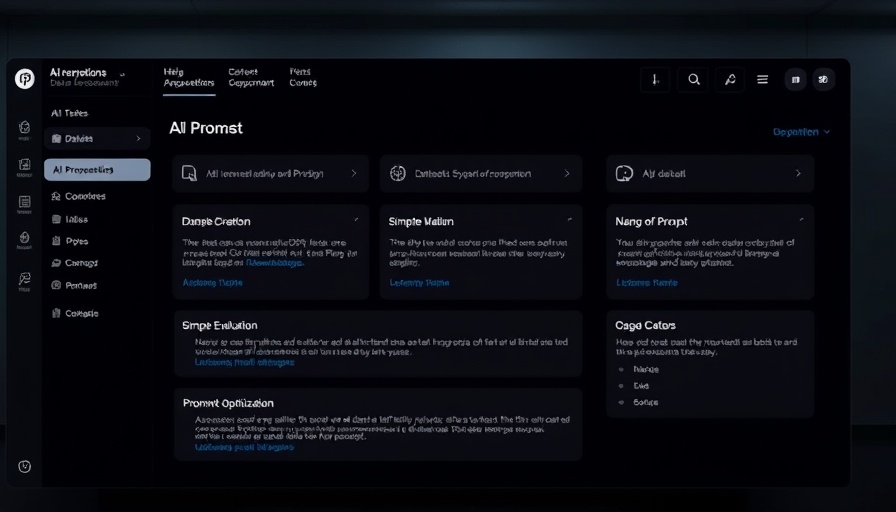
Revolutionizing Prompt Engineering: The Benefits of LLM-Evalkit
In the burgeoning field of artificial intelligence and machine learning, streamlining workflows is essential for maximizing productivity and innovation. Google's new framework, LLM-Evalkit, seeks to standardize the prompt engineering process, enabling teams to optimize their usage of Large Language Models (LLMs). By centralizing fragmented prompt management across various tools into a single application, LLM-Evalkit offers a structured solution to a common challenge in AI development.
A Centralized Hub for Prompt Management
Historically, engineers have had to juggle between multiple platforms just to manage and test their prompts. This disjointed approach tends to result in duplicated efforts and inconsistent testing results. LLM-Evalkit resolves this issue by providing a unified interface that integrates all activities related to prompt management—from composition to evaluation. By consolidating resources, LLM-Evalkit empowers developers to maintain a consistent workflow and significantly improves collaboration among team members.
From Subjectivity to Objectivity: Transforming Iteration
In many teams, prompt iteration is often guided by subjective intuition, leading to inefficiencies and reduced scalability. LLM-Evalkit shifts this focus to measurable outcomes by encouraging users to design prompts based on concrete data. This method allows teams to test their models within a framework of objective metrics, ensuring that improvements are not just perceived but quantifiable. By establishing benchmarks, teams can confidently track progress and iterate based on solid empirical evidence.
Empowering Teams with Accessibility
Moreover, LLM-Evalkit champions inclusivity through its no-code design. It aims to democratize prompt engineering, making it accessible not only to developers but also to product managers, UX writers, and other stakeholders. This move opens the door for greater collaboration, where diverse team members can contribute their insights, promoting a rich cross-pollination of ideas that can drive innovation.”
What This Means for the Future of AI Development
As organizations globally strive to implement AI technologies, frameworks like LLM-Evalkit refine how teams approach prompt engineering. With efficient coordination and systematic evaluation, teams can optimize their LLMs far more effectively—transforming the way solutions are developed and evaluated.
Discover the Possibilities
LLM-Evalkit is now available as an open-source project on GitHub, inviting teams to explore its capabilities. As the workspace for AI continues to evolve, leveraging tools like LLM-Evalkit will be pivotal in enhancing collaboration and innovation within the tech landscape.
To delve deeper into LLM-Evalkit's features and impact, visit the GitHub repository for comprehensive documentation and to start your journey towards an efficient prompt engineering process today.
 Add Row
Add Row  Add
Add 




Write A Comment